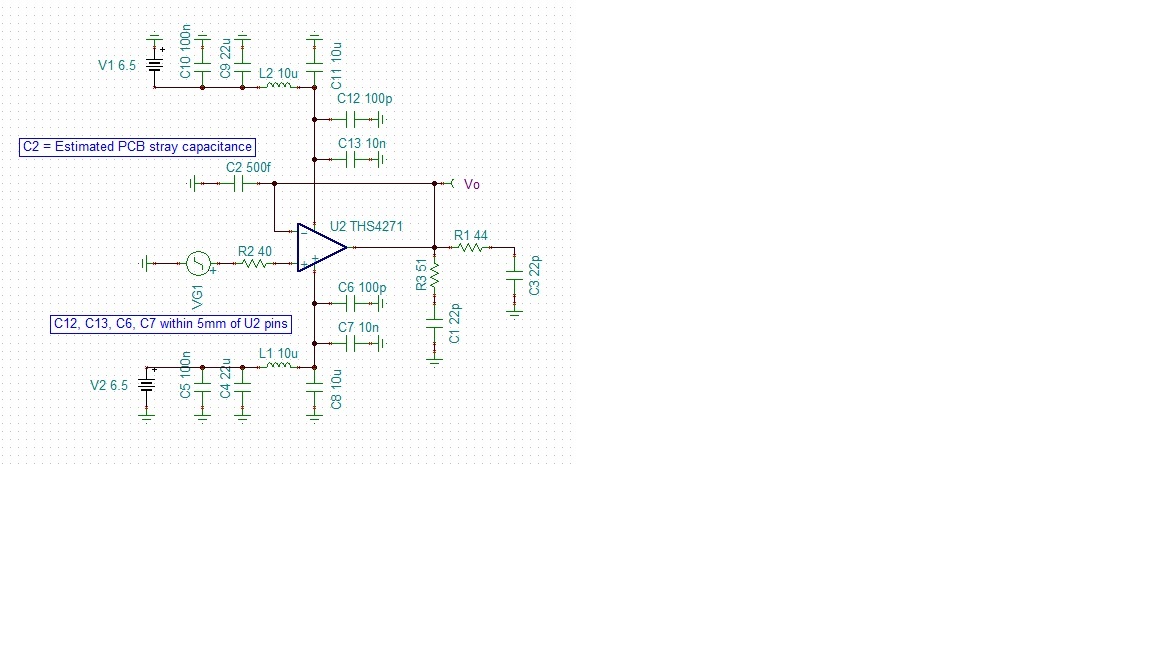Other Parts Discussed in Thread: THS4271, OPA820,
The data sheet for this parts warns that above a variable temperature threshold, the device may exhibit unpredictable low level oscillations. We have a design which uses these parts and up to now, has never shown an indication that oscillations of this sort may be present. However, we have recently done a re-spin of the board and several of these devices are now showing anomalous behaviour, one explanation for which could be the presence of a low-level oscillation in the 100s of MHz region. To know if this oscillation is a manifestation of the temperature-induced oscillation mentioned in the data sheet or something quite different, e.g. a loop stability issue, I really need some additional information on the characteristics of temperature-induced oscillation if it occurs :- particularly what sort of frequency it would be at, what sort of magnitude and how is it best modelled - voltage source in series with the inputs, voltage source in series with output etc.
Any help with this would be much appreciated.
Robert Phillips



